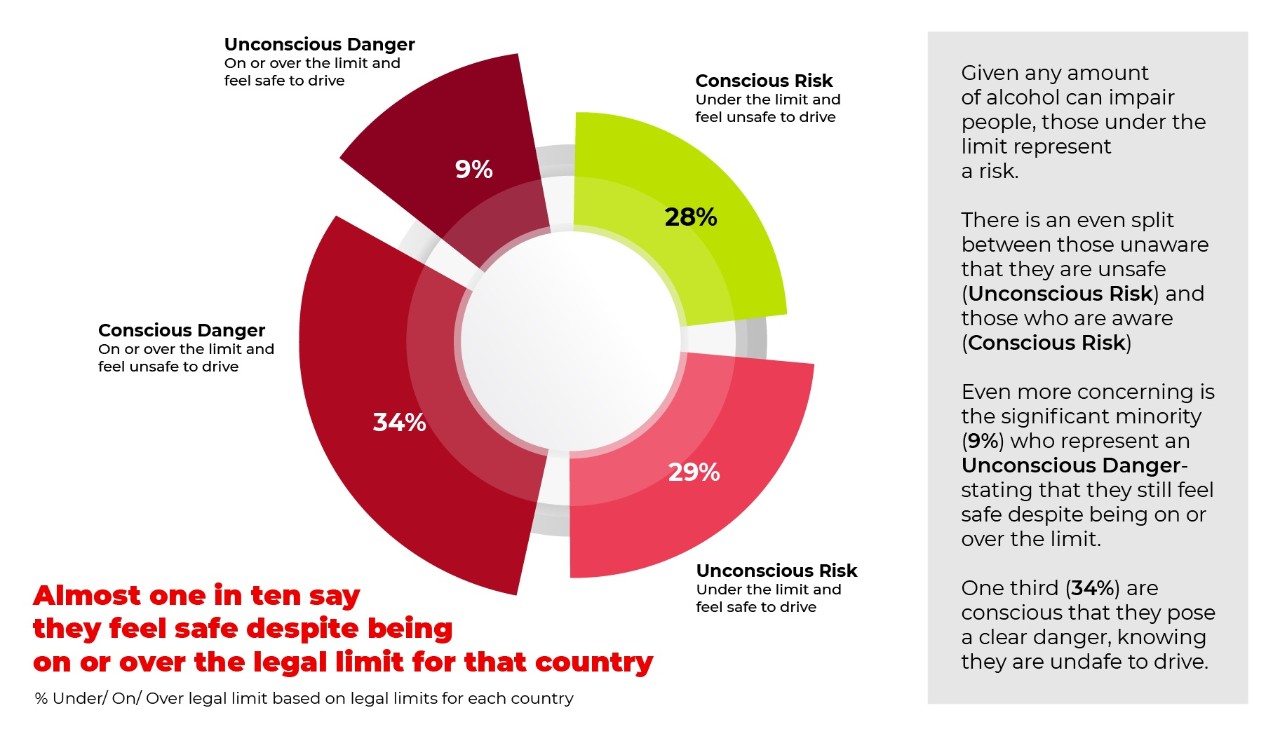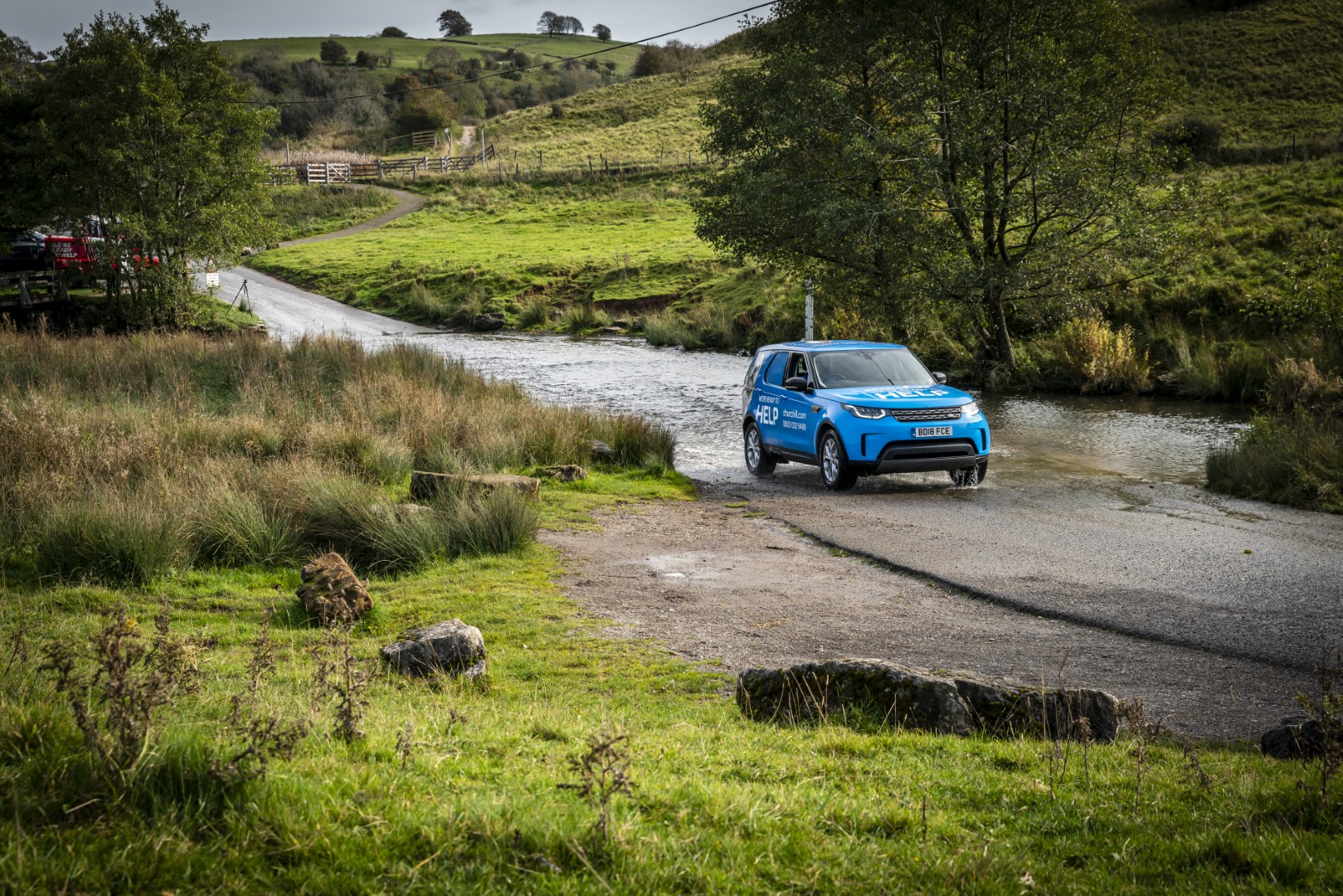A quarter of adults believe it is ok to drive after drinking
A quarter of adults (25%) still think it is ok to drive after drinking, if they stay within the legal limits
Among those who do drive after drinking, almost half (49%) say they understand the drink drive limits. Whereas, 82% of people cannot correctly identify them
Alarmingly, one in four (25%) say they would still feel safe to drive - even after consuming four or more drinks
As the Government’s latest data on drink driving is released, Direct Line reveals how outdated attitudes and widespread misinformation continue to put motorists at risk.
To explore this issue, Direct Line conducted a nationwide study to assess public understanding of the legal drink drive limits across England, Wales, Northern Ireland, and Scotland, as well as attitudes and behaviours around drink driving. Additional fieldwork in Glasgow, Northampton, and Cardiff involved breathalyser testing on individuals who had consumed between one and six alcoholic drinks, to determine whether they could accurately judge if they were within the legal limits.
The findings show that whilst (58%) of adults believe it is socially unacceptable to drive after drinking alcohol, even within the legal limits, many still underestimate the risk posed. Alarmingly, one in four drivers, (25%) said they would still feel safe to drive - even after four or more drinks.
Among those who admit to driving after drinking:
Almost half (49%) claim to understand the legal drink driving limits and how they translate into measures of alcohol.
And a third (32%) say they know how their body reacts to alcohol and trust their own limits.
Yet when asked to identify the correct legal limits, eight out of ten people (82%) guessed incorrectly, or simply did not know. This overconfidence, combined with reliance on personal judgement misinformation and common myths believed to lessen the impact of alcohol, is leaving the UK’s roads at the mercy of an unconscious risk and danger amongst drivers.
The research study revealed a quarter (25%) of UK adults wrongly think the legal drink driving limits are measured by the quantity of drinks consumed, allowing men to consume two standard (175ml) glasses of wine, and women to consume one.
A third of people (30%) believe that drinking soft drinks or water alongside alcohol, changes how the body metabolises alcohol and therefore helps to lessen the effect of alcohol on your body. Both are incorrect.
Many drivers are also relying on a set of common myths and beliefs to justify their actions. One in five (22%) of those who have driven after drinking alcohol said they got behind the wheel because several hours had passed since their last alcoholic drink. And a quarter (26%) of those believed soft drinks offset the effects of alcohol, while 14% felt they were safe to drive after two or more drinks, because they had also eaten a meal alongside drinking.
Among the 97 people who took part in the breathalyser test, over a quarter (27%) expected to still be under the legal limits, but when tested, two fifths (43%) measured on or above it. None of the 97 participants could accurately articulate the current legal limits for drink driving, yet nearly four in ten (39%) said they would rely on their own judgement and how they felt before deciding whether they were safe to drive or not.
The results highlight just how unreliable personal judgement is, as while nearly half of testers who got a negative reading said that they did not feel safe to drive, a worrying 14% of people who did register above the legal limits, said they still felt safe to get behind the wheel.
The experiment highlights both the conscious and unconscious risk to road safety. Even drivers who tested within the legal limits may still be unsafe to drive and can exceed it only a short while later, as the rate of alcohol absorption into the blood system depends on a wide range of factors and can be different each time a person drinks3.
The chart below reveals a concerning disconnect between perception and reality when it comes to drink driving. A third of people (34%) who were over the legal limits felt unsafe to drive, while 28% who felt unsafe were under. Most concerning, however, were the nine per cent of drivers who believed they were safe to drive, but were, in fact over the legal limits – highlighting the serious risk posed on relying on personal judgement alone.

Source: Direct Line Motor Insurance 2025
Commenting on the findings Matt Pernet, Head of Direct Line Motor Insurance, said: “It is encouraging that 58% of people view drink driving as socially unacceptable, but there are still too many drivers who believe they are safe to drive after drinking. Our research found that 82% of people cannot identify the legal limits, and nine per cent of drivers who were over still felt safe to drive.
“Relying on personal judgement, previous experiences, or myths, like drinking water or eating a meal will lessen the effects of alcohol, presents a significant risk to all drivers. Alcohol affects everyone differently and there is no reliable way to judge if you are legal to drive other than taking a breathalyser test. But even then, legal does not necessarily mean safe, as our experiment showed.
“As the latest data on drink driving is released this week by the Government, we urge people to rethink their choices. The safest option is simple; if you are drinking, then do not drive.”
- ENDS -
Verbatim comments from participants who felt safe to drive and expected to be under the limits, but when tested were found to be above the legal limits
“Wow, that is shocking. I can't believe it I honestly thought I would be under because only had a couple … I thought you have to drink more to be over but obviously not”
“Gobsmacked. That definitely changes things for me - I will drink less. I thought I'd be fine with just one”
“That's incredible - I thought I would be not as bad - thought I would be OK but it says clearly not”
“Surprised - I thought it would be less [than the limit] because feel as if I would be capable to drive”
And from drivers who said that they didn’t feel safe to drive, but actually turned out to be under the legal limits
“Surprises me and worries me because I can feel the effects of the alcohol on me and I would not feel safe driving”
“That is shocking because I wouldn't drive with the way I feel now”
“That’s absolutely shocking. That’s suggesting I could still drive when I don’t feel safe at all”
“Wow, I don't feel safe to drive, I feel much further over the limit than what that suggests. In my opinion there should be a zero limit. You either drink and don't drive or drive and don't drink.”
Notes to Editors
Research conducted by Direct Line Motor Insurance on a sample of 2,000 UK Adults (~1,300 UK drivers) from 3rd – 6th June 2025.
Research conducted by Boscombe Insights Advisory who interviewed 97 people who had been drinking that day (but were not driving) on whether they felt safe to drive, and then breath tested them. The interviews took place in Glasgow, Northampton and Cardiff during June and July 2025.
University of Notre Dame: Absorption rate factors - https://mcwell.nd.edu/your-well-being/physical-well-being/alcohol/absorption-rate-factors/
For further information please contact:
Direct Line:
Chelsey Wheeler
Deputy Head of News and Issues
Email : Chelsey.wheeler@directlinegroup.co.uk
About Direct Line
Started in 1985, Direct Line became the first UK insurance company to use the telephone as its main channel of communication. It provides motor, home and pet insurance cover direct to customers by phone or on-line and is part of the Aviva Group.
Customers can find out more about Direct Line products or get a quote by calling 0345 246 3761 or visiting www.directline.com/car-cover
